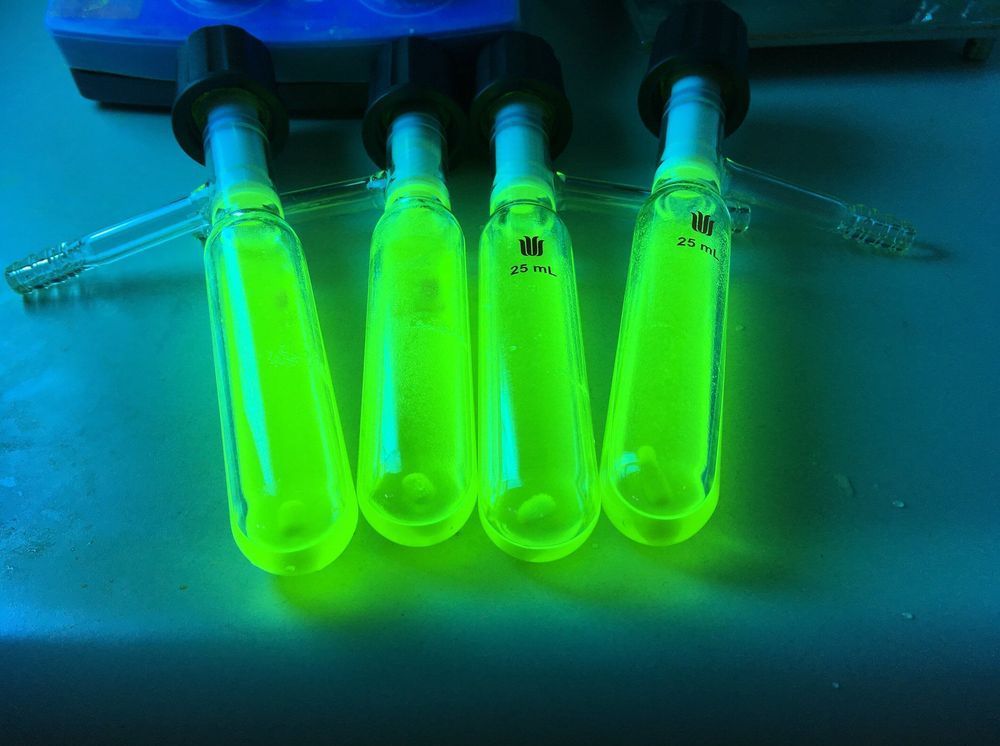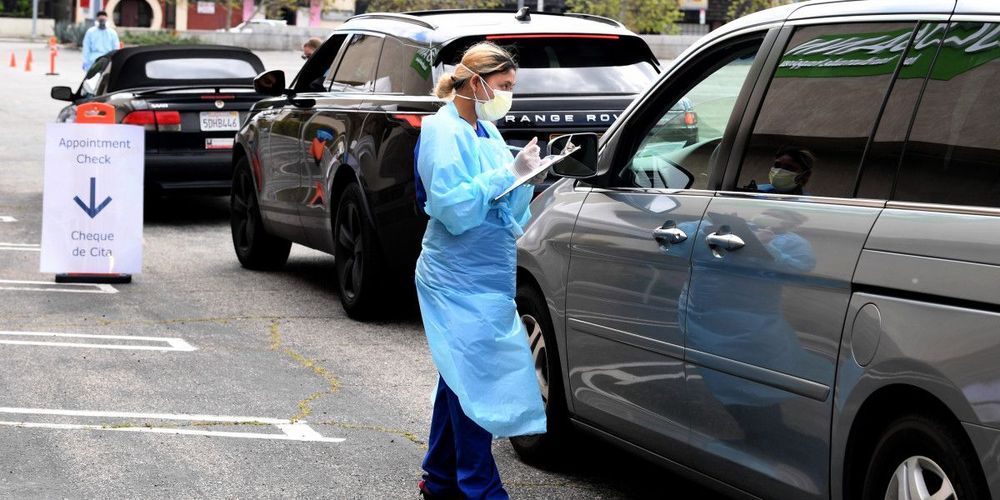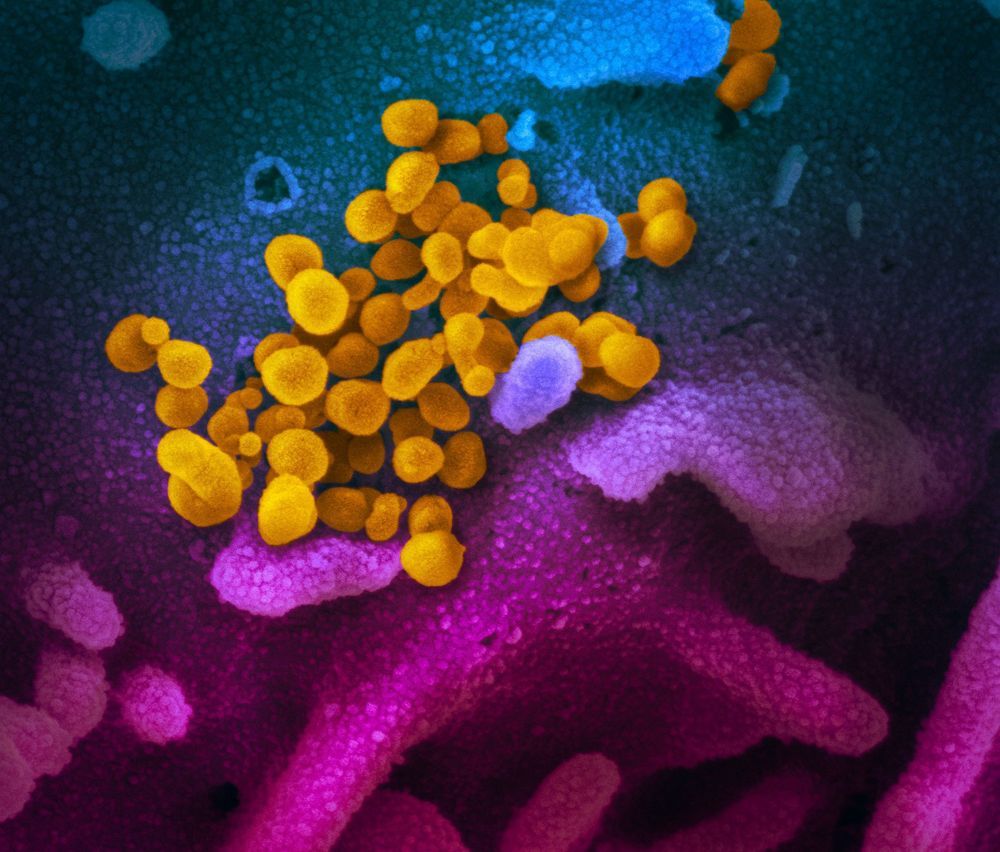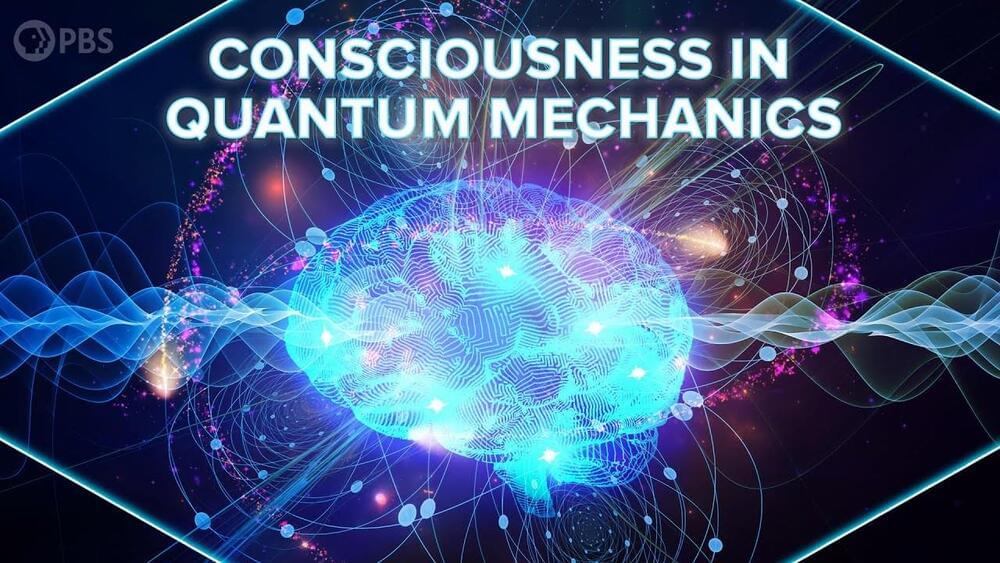At the Paul Scherrer Institute PSI, researchers have gained insights into a promising material for organic light-emitting diodes (OLEDs). The substance enables high light yields and would be inexpensive to produce on a large scale—that means it is practically made for use in large-area room lighting. Researchers have been searching for such materials for a long time. The newly generated understanding will facilitate the rapid and cost-efficient development of new lighting appliances in the future. The study appears today in the journal Nature Communications.
The compound is a yellowish solid. If you dissolve it in a liquid or place a thin layer of it on an electrode and then apply an electric current, it gives off an intense green glow. The reason: The molecules absorb the energy supplied to them and gradually emit it again in the form of light. This process is called electroluminescence. Light-emitting diodes are based on this principle.
This green luminescent substance is a hot candidate for producing OLEDs, organic light-emitting diodes. For about three years now, OLEDs have been found in the displays of smartphones, for example. In the meantime, the first flexible television screens with these materials have also come onto the market.
Starting in the fall of 2016 and continuing into 2018, researchers at Columbia University in Manhattan began collecting nasal swabs from 191 children, teachers, and emergency workers, asking them to record when they sneezed or had sore throats. The point was to create a map of common respiratory viruses and their symptoms, and how long people who recovered stayed immune to each one.
The research included four coronaviruses, HKU1, NL63, OC42, and C229E, which circulate widely every year but don’t get much attention because they only cause common colds. But now that a new coronavirus in the same broad family, SARS-CoV-2, has the world on lockdown, information about the mild viruses is among our clues to how the pandemic might unfold.
What the Columbia researchers now describe in a preliminary report is cause for concern. They found that people frequently got reinfected with the same coronavirus, even in the same year, and sometimes more than once. Over a year and a half, a dozen of the volunteers tested positive two or three times for the same virus, in one case with just four weeks between positive results.
There is widespread agreement that the only way to safely reopen the economy is through a massive increase in testing. The US needs to test millions of people per day to effectively track and then contain the covid-19 pandemic.
This is a tall order. The country tested only around 210,000 people per day last week, and the pace is not increasing fast enough to get to millions quickly.
The urgency to do better is overwhelmingly bipartisan, with the most recent legislation adding $25 billion for testing a few days ago. Fears are growing, however, that testing might not scale in time to make a difference. As Senators Lamar Alexander and Roy Blunt wrote last week, “We have been talking with experts across the government and the private sector to find anyone who believes that current technology can produce the tens of millions of tests necessary to put this virus behind us. Unfortunately, we have yet to find anyone to do so.”
Virgin Galactic’s newest SpaceShipTwo space plane just flew freely above its New Mexico home base for the first time.
Kim Jong Un appears in public
Posted in futurism
The North Korean leader made his first public appearance in 20 days as he celebrated the completion of a fertilizer factory near Pyongyang.
The investigators concluded that diffuse bilateral pulmonary inflammation observed in COVID-19 is associated with a novel pulmonary-specific vasculopathy, which is distinct from DIC, and which they’ve termed “pulmonary intravascular coagulopathy (PIC).”
“Understanding how these micro-clots are being formed within the lung is critical so that we can develop more effective treatments for our patients, particularly those in high-risk groups,” O’Donnell commented. “Further studies will be required to investigate whether different blood thinning treatments may have a role in selected high-risk patients in order to reduce the risk of clot formation.”
The authors suggest that larger, controlled studies will be needed to determine whether more intensive anticoagulation and/or targeted anti-inflammatory therapies might help reduce PIC in patients with severe COVID-19. The findings may also be relevant to growing evidence that some ethnicities are more likely to develop serious COVID-19 than others. “Given that thrombotic risk is significantly impacted by race, coupled with the accumulating evidence that coagulopathy is important in COVID-19 pathogenesis, our findings raise the intriguing possibility that pulmonary vasculopathy may contribute to the unexplained differences that are beginning to emerge highlighting racial susceptibility to COVID-19 mortality,” they concluded.
With the trillions of antibodies the human body can make, finding the antibody with the right combination of potency against a target and ease of manufacturing is, at best, an arduous, time-intensive endeavor for drug developers. AbCellera Biologics Inc. has developed a way to dramatically speed that process.
It is using its proprietary AI system to empower the search. It is mining the diversity of antibodies made by the immune system to find the relatively few that are optimized by nature to be well-suited for drug development. “A human makes trillions of different antibodies, but only a small set binds to the target of interest. Of those, only a few can be developed as drugs,” Carl Hansen, Ph.D., CEO of AbCellera, explained.
Hansen sees AbCellera as a “discovery and innovation shop. We identify the properties of antibodies that make them easy to manufacture and potent.”
Education Saturday with Space Time.
It’s not surprising that the profound weirdness of the quantum world has inspired some outlandish explanations – nor that these have strayed into the realm of what we might call mysticism. One particularly pervasive notion is the idea that consciousness can directly influence quantum systems – and so influence reality. Today we’re going to see where this idea comes from, and whether quantum theory really supports it.
The behavior of the quantum world is beyond weird. Objects being in multiple places at once, communicating faster than light, or simultaneously experiencing multiple entire timelines … that then talk to each other. The rules governing the tiny quantum world of atoms and photons seem alien. And yet we have a set of rules that give us incredible power in predicting the behavior of a quantum system – rules encapsulated in the mathematics of quantum mechanics. Despite its stunning success, we’re now nearly a century past the foundation of quantum mechanics and physicists are still debating how to interpret its equations and the weirdness they represent.
I am a progress lover 1/10
Posted in transhumanism
I just watched an interesting series of videos on YouTube that I’d like to recommend. It is an introductory level series of very short videos on the topic of transhumanism. They are in French with subtitles. Guillaume Loublier created these to spread the word of Transhumanism throughout France. There are four videos, and if you start with the first one, then they all play in sequence automatically.
Watch them and let Guillaume know what you think of his work.
Version anglophone traduite par Julia VALETTE









